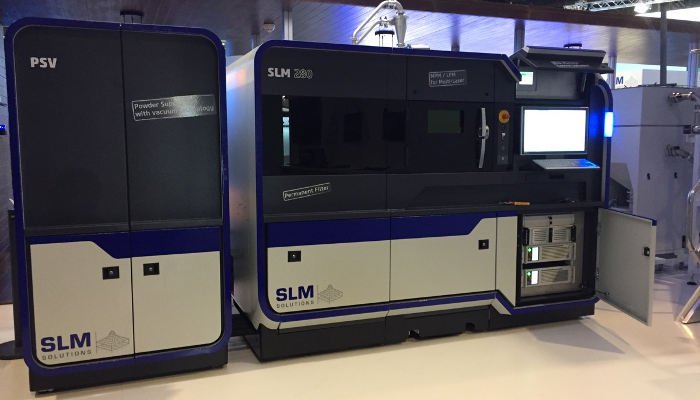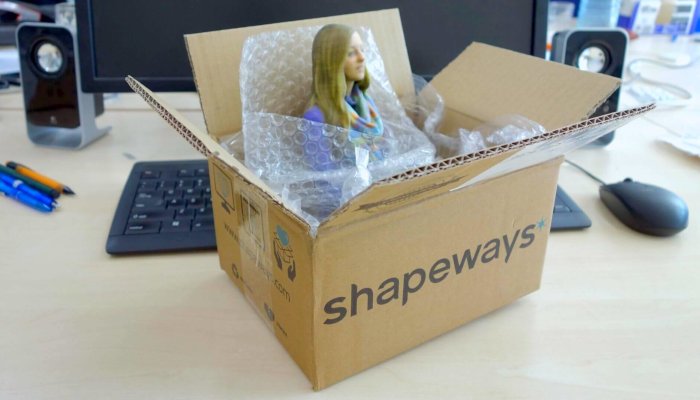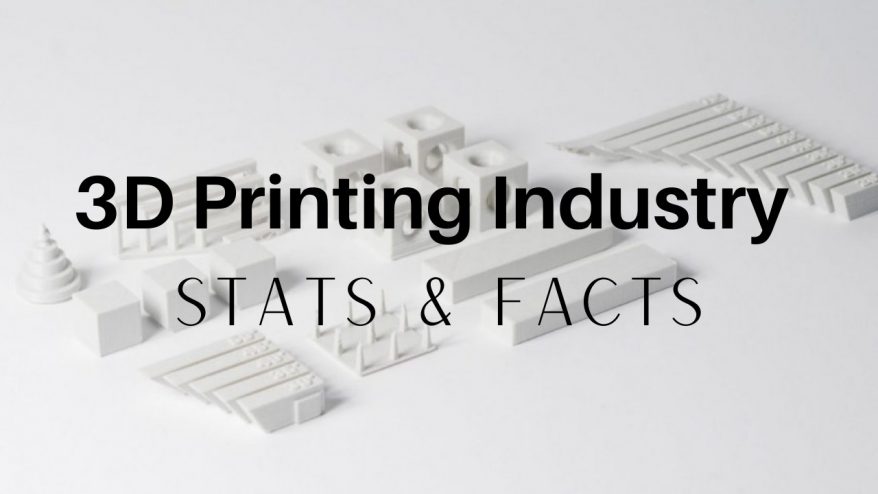Media headlines concerning 3D printer companies are usually reserved for breakthroughs in 3D Bioprinting, or a metal 3D printer that can reduce part cost by 90%. These discoveries and innovations come with lines of enthusiastic investors looking to inject capital to scale the 3D printer manufacturer to become the next Desktop Metal or Carbon 3D.
Here are the 15 most valuable 3D printing companies and 3D printer manufacturers by market cap, those that are quietly changing the world. Some of these companies are household names, some not so known. Nevertheless, they are crucially important to the past, and the future of the 3D printing industry.
DISCLAIMER: All live share price data courtesy of TradingView.com. Market Caps are liable to fluctuate, and are based on figures of 18th July 2023. Private companies are valued on their most recent investment round. If you represent a company that either should be featured on this list and have evidence of this, please get in touch so we can keep this list as accurate as possible.
We could only include 3D printer companies who either have precise values based on share prices and market caps, or recent investment rounds based on a set valuation. Large 3D printer companies such as Ultimaker, EnvisionTEC, Renishaw, Raise3D and others do not have this data available and so cannot be included.
The 3DSourced 15: Most Valuable 3D Printer Companies 2023
HP – Market Cap $22.02B
- Founded: 1939 (as Hewlett-Packard)
- Company based: USA
- Main 3D printing technology: Multi Jet Fusion
American computer giant HP, having dominated 2D inkjet printing for so many years, moved into 3D printing and the tech giant has since developed a range of line of Multi Jet Fusion 3D printers to offer full-color and scalable plastic part printing.
Despite being the most valuable company, only a small portion of this valuation is from 3D printing activity. It is difficult to calculate the exact value of HP’s 3D printing division as the company includes other services along with its reported 3D printing income, so we have only reported the total company value. GE’s market cap of around $63B is higher than HP’s, but we have the data to calculate GE Additive’s valuation and we have therefore included this figure instead.

Desktop Metal – Market Cap $610.95M — Biggest 3D Printer Company in Metal
- Founded: 2015
- Company based: USA
- Main 3D printing technology: Bound Metal Deposition
Despite only being founded in 2015, Desktop Metal is a metal 3D printer manufacturer to watch very closely. With an insatiable appetite for expansion and metal 3D printing efficiency, Desktop Metal’s Bound Metal Deposition (BMD) technology promises to make metal 3D printing more affordable than ever before. Co-founded by a group of talented MIT researchers and venture capitalists including Ric Fulop, the company now employs over 300 full-time staff.
The impact that Desktop Metal has made in the industrial 3D printer industry and in the metal 3D printer space cannot be underestimated. Many investors agree, with the likes of Google, BMW, GE, Stratasys, and more clamoring to get in on part of the action. So much so in fact, that they have collectively invested over $438M, with newest valuations at around $2.5bn. Desktop Metal first released their Production and Studio Systems, before following up with the more accessible Fiber System which you can rent for $3,495 per year.
In 2021, Desktop Metal acquired ExOne in a deal worth up to $561.3 million USD. They are known for pioneering Binder Jetting 3D printing, able to 3D print metal as well as sandstone and an interesting alternative to DMLS or EBM.

Carbon 3D – Market Cap $1.28B — biggest 3D printer company in resin
- Founded: 2014
- Company based: USA
- Main 3D printing technology: CLIP (Continuous Liquid Interface Production)
Less than ten years old, Carbon 3D are another company which have experienced massive investment and a sky-high market capitalization. Pioneering their CLIP 3D printing technology (a hybrid of stereolithography which allows them to print objects up to 100 times faster), Carbon 3D has started to sell their industrial 3D printer systems across the globe.
Started by Joseph and Philip DeSimone, Carbon 3D attained widespread exposure after their TED Talk about 3D printing 100x faster went viral. Since then, major 3D printing services such as Sculpteo have since introduced CLIP technologies into their service portfolio and Carbon have raised over $680M in total at a valuation of $2.4B. Since this valuation is wholly based on 3D printing, Carbon 3D is the most valuable 3D printing company.

4 – Materialise NV – Market Cap $523.34M — Biggest 3D Printing Company Service
- Founded: 1990
- Company based: Belgium
- Number of employees: 1,000+
Materialise is a Belgian 3D printing service and rapid prototyping pioneer, having grown from creating medical software to employing over 1,000 staff members worldwide. Materialise NV is formed of two subsidiaries: Materialise, which specializes in rapid prototyping in industrial 3D printing applications; and i.materialise, a marketplace and B2C/C2C online 3D printing service allowing makers to upload their designs to be 3D printed and mailed to them.
Though not a 3D printer manufacturer, this strategy has allowed Materialise NV to capture a wide swath of the market, encompassing both consumer and industrial demand. Their marketplace also helps to democratize 3D printing and 3D design, allowing designers who create their own models on professional 3D software tools to sell these designs on the i.materialise platform.

GE Additive – Estimated Value $1.4B (Arcam & Concept Laser) — 3D printer manufacturer group
Concept Laser, along with Arcam, are now part of the GE Additive umbrella since the American multinational acquired majority stakes in both companies in 2016. Originally a German company founded in 2000 by Frank Herzog, Concept Laser produce DMLS 3D printers, including the incredible Concept Laser X Line 2000R, with its extraordinary 800 x 400 x 500 mm build volume!
Swedish company Arcam has been a major player in the industrial 3D printer industry since being established back in 1997. Arcam is the only company to commercialize Electron Beam Melting technology, a metal 3D printing technology similar to DMLS, but using an electron beam rather than a laser to sinter metal powder.
After attempting to acquire SLM Solutions, GE turned their attentions towards both Arcam and Concept Laser. In December 2016, GE announced they had acquired a 75% share in the German company for an estimated $599M, against an estimated $800M total valuation. Under GE’s guidance, we can safely assume Concept Laser will continue to innovate in the 3D printing industry. Arcam was purchased for an estimated $685M, bringing GE’s investment to $1.4B, though the company hope that this investment will reduce costs across the company by $3-5B over the next decade.
However, in August 2020 GE reported $877M in goodwill impairment charges in relation to additive manufacturing, meaning that they do not believe — perhaps as a result of the economic hit from the pandemic — that this is as profitable investment as previously thought.

EOS – Market Cap Between $1B and $2.9B — large DMLS and SLS 3D printer manufacturer
- Founded: 1989
- Company based: Germany
- Main 3D printing technology: Direct Metal Laser Sintering
Another company that has been around since almost the beginning of 3D printing, powerhouse EOS is a striking example of Germany’s extraordinary engineering capabilities. Founded by Dr Hans Langer in 1989, EOS experienced significant success during the 1990s through selling some of their early SLS 3D printers to companies including BMW and Mercedes-Benz.
Originally an industrial 3D printer manufacturer in the Selective Laser Sintering market, EOS went on to pioneer Direct Metal Laser Sintering. Their first DMLS 3D printer, the EOSINT M 250, was released in 1995 following extensive R&D throughout 1994. For the next 20 years, EOS would control the DMLS industry, until recently where rival companies such as SLM Solutions, Xact Metal and 3D Systems manufacturing competing printers. EOS is a key part of the history of industrial 3D printer systems, and responsible for much of the innovation in metal 3D printing.
Dr Langer himself is worth an estimated $2.9B and is said to be 3D printing’s first billionaire. He controls EOS Group, which includes the EOS 3D printing division as well as a variety of other data and electrical services. The value of EOS is hard to distinguish as we cannot tell how much of EOS Group is the 3D printing division.

3D Systems – Market Cap $1.28B
- Founded: 1986
- Company based: USA
- Main 3D printing technology: Stereolithography
The original 3D printing company; 3D Systems was founded by Chuck Hull to commercialize stereolithography all the way back in 1986, two years after he invented the process. Since their first industrial 3D printer — the SLA-1 — 3D Systems has grown exponentially to annual revenues in the hundreds of millions of dollars. What’s more, the SLA-1 has since been declared an engineering landmark by the ASME, further displaying the influence 3D Systems have had on the industry.
Despite the multitude of new companies who have since entered the market, the American 3D printer manufacturer remain an effective competitor. A clever strategy mixing innovation with high-profile acquisitions has proven smart, and the company is now worth around $1.33bn. The most important acquisitions include DTM in 2001 (who held the patents to Selective Laser Sintering), Z Corp in 2011, Phenix Systems in 2013, and Simbionix and LayerWise in 2014.
With SLA and SLS 3D printer options as well as metal 3D printers, 3D Systems have a strong hold on the industrial 3D printer market. 3D Systems also produce 3D scanners.

Stratasys – Market Cap $1.4B
- Founded: 1988
- Company based: USA
- Main 3D printing technology: Fused Deposition Modeling
Formed shortly after 3D Systems by Scott Crump to commercialize Fused Deposition Modeling, Stratasys is another 3D printing giant still competing almost 30 years later. Since releasing their first FDM 3D printer, the 3D Modeler, in 1992, Stratasys have expanded into PolyJet and Lost Wax Casting printing.
Though an industrial 3D printer manufacturer, Stratasys also own desktop 3D printer company Makerbot. Stratasys bought the company — which gained success after creating the first popular DIY 3D printer kit in 2009 — for $403M in stock. They also merged with Objet Geometries in 2012 to combine Objet’s PolyJet 3D printers into the their 3D printer range. Additionally, Stratasys purchased 3D printed jewelry manufacturer SolidScape in 2011 for $38M in cash, and have launched their Stratasys Direct 3D printing service.

Formlabs – Market Cap ~$1B
- Founded: September 2011
- Company based: USA
- Main 3D printing technology: Stereolithography
Formlabs is the classic Silicon Valley-esque tech startup success story. Founded by three MIT students Maxim Lobovsky, Natan Linder, and David Cranor; Formlabs first made headlines by raising an unprecedented $2.95M on Kickstarter to produce their Form 1 SLA 3D printer, which ranks it in the top 100 highest funded crowdfunding projects of all time! The Form 1 ranks even higher if you remove the abundance of blockchain projects on the list.
Since then, Formlabs has received around $100M in total venture capital and shipped over 35,000 3D printers around the world. The company has since expanded into Selective Laser Sintering with their Fuse 1 SLS 3D printer, and acquired prominent 3D printing marketplace Pinshape in 2016 which boasts revenues of over $2M annually. Now with over 500 employees across North America, Europe and Asia, the future looks bright for the folks at Formlabs.
Most recently in 2018 Formlabs took on 15M investment based on a valuation of $1B. It’s officially a unicorn.

Protolabs – Estimated 3D Printing Business Market Cap $915M
- Founded: 1999
- Company based: USA
American 3D printing service Protolabs has grown exponentially since being incorporated in 1999. The company now employs over 1,000 dedicated staff members across their main lab in Minnesota as well as in England, Germany and Japan; and is since 2012 is a publicly traded 3D printing stock listed on the NYSE. The American company has undertaken some high-profile acquisitions in recent times, including a $120M deal to acquire RAPID Manufacturing in 2014.
Protolabs are the largest service company on this list overall, with $445M revenues in 2018 and a market cap of $4.2bn as of late 2020. However, these revenues and valuations encompass a variety of other service that are not 3D printing-related, such as CNC milling and injection molding. Of their $117.5M Q3 2019 revenues, an estimated $15.8M was from 3D printing — 13.4% of revenues. Therefore we can reasonably ascertain that 13.4% multiplied by market cap of $4.2bn = $562M is the value of their 3D printing offering.

Markforged – Estimated Market Cap Between $300M to $500M
- Founded: 2013
- Company based: USA
- Main 3D printing technology: Continuous Filament Fabrication
Since being founded in 2013 by Greg Mark to take advantage of their carbon fiber composite printing, Markforged has been a continuous success story. Moving on from a manufacturing desktop 3D printers to their first metal 3D printer — the Markforged Metal X — and their industrial product range.
This continued success has led to several investments to equip Markforged with the funds it needs to expand further. The company received investment based on a valuation of $300M back in 2017, and in 2019 received an additional $82M. Crunchbase says Markforged is worth between $100M and $500M, but based on this investment and previous valuation it is safe to say that this is almost certainly right at the highest end of that estimation.
As a company not limited to just the industrial 3D printer industry, Markforged has the potential to become one of the best 3D printer companies in both consumer and industrial 3D printing.

SLM Solutions – Estimated Market Cap $323M
- Founded: 2006
- Company based: Germany
- Main 3D printing technology: Direct Metal Laser Sintering
Undoubtedly a market leader in DMLS technologies, SLM Solutions was founded in 2006 — though the beginnings of the company can be traced back to the 1990s. The German company has a stellar reputation for anything SLM/DMLS, and has expanded to sell three SLM 3D printers.
A leader in industrial machines, SLM Solutions supply clients across the aeronautics, automotive, dental and medical sectors among others. This is because metal 3D printing allows for strong metal parts which are also lighter, creating significant cost savings for industrial companies. SLM looks to experience solid growth and to cement itself in the DMLS industry going forward.

XJet – Estimated Market Cap $175M to $250M
- Founded: 2005
- Company based: Israel
- Main 3D printing technology: NanoParticle Jetting
XJet are most known for their patented NanoParticle Jetting technology, used in their metal 3D printer solutions; the Carmel 700M and Carmel 1400M. Since their founding in 2005 XJet have invested in projects such as 3D printing solar panels, before more recently focusing their attentions on the burgeoning metal and ceramic 3D printing markets.
The technology used is not dissimilar from Binder Jetting; both jet particles towards a build tray. The technology is a result of numerous investment rounds totaling in the high double figure millions. As a result, XJet is pioneering low-cost metal 3D printing, and the company appears to have a bright future ahead. Startup Map Berlin estimates XJet’s value at between $175M and $250M.

Shapeways – Estimated market cap $29.44M
- Founded: 2007
- Company based: Holland/USA
Though now based in New York, Shapeways is a prominent 3D printing service founded in Holland back in 2007 by Peter Weijmarshausen. Similar to i.materialise, Shapeways allows 3D designers to sell their designs online through their marketplace and earn a percentage of the profits whenever someone orders a 3D print of their design. Shapeways then prints the model in-house and mails it to the buyer.
Since founding, Shapeways has received over $100M in funding; the most recent a $30M Series E funding round in April 2018 based on a valuation of $191.5M. This funding has allowed Shapeways to expand into a variety of 3D printing technologies, now hosting SLA, SLS, DMLS, PolyJet, and Binder Jetting, and compete with companies such as Materialise NV, Protolabs, Sculpteo, 3D Hubs and more. Their use of PolyJet allows them to offer color 3D printing, as shown in the image below.

Organovo – Market Cap $14.82M — Most Valuable 3D Printing Company in Bioprinting
- Founded: 2007
- Company based: USA
- Main 3D printing technology: 3D bioprinting
Organovo was the main subject of our feature story on 3D bioprinting and 3D printed organs. The San Diego-based company researches extensively to develop innovative new ways of using bioprinting to improve human health. For example, Organovo have demonstrated significant progress in 3D printed blood vessels, as well as creating tissues that can be transplanted in the event of a partial organ failure such as in the liver.
Organovo has listed on the New York Stock Exchange since 2013, with its market cap hitting a peak of around $500M. The company has since signed major several major partnerships, such as with L’Oreal to develop 3D bioprinted skin tissue to aid with the testing of cosmetic products.















